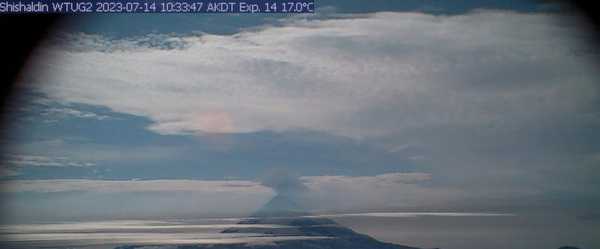
ANCHORAGE, Alaska — An erupting volcano in Alaska’s Aleutian Islands sent a towering cloud of ash into the air Friday, prompting the National Weather Service to issue an inflight warning to pilots.
The Shishaldin Volcano began erupting July 11, according to the Alaska Volcano Observatory. A U.S. Coast Guard overflight confirmed lava erupted the same day within the summit crater.
A significant explosion at 1:09 a.m. Friday produced an ash cloud that reached up to 40,000 feet (12,192 meters) and drifted south over the Pacific Ocean. A second smaller explosion at 7:10 a.m. Friday reached about 15,000 feet (4,572 meters).
The National Weather Service issued a inflight weather advisory due to the drifting ash cloud.
Volcanic ash is angular and sharp and has been used as an industrial abrasive. The powdered rock can cause a jet engine to shut down.
The volcano is 679 miles (1,093 kilometers) southwest of Anchorage near the center of Unimak Island, the largest island in the Aleutians. False Pass, a village of 40 people, is on the island’s east side.
The volcano is a symmetrical cone that is 10 miles (16 kilometers) in diameter at its base. It rises to 9,373 feet (2,857 meters) and is the highest peak in the Aleutians.
Shishaldin is one of the most active volcanoes in the Aleutian volcanic arc. Most eruptions are small. An event in 1999 spewed an ash column that reached 45,000 feet (13,716 meters).
The volcano is monitored with seismic and infrasound sensors, satellite data, a web camera and distant infrasound and lightning networks.
Sourse: abcnews.go.com






